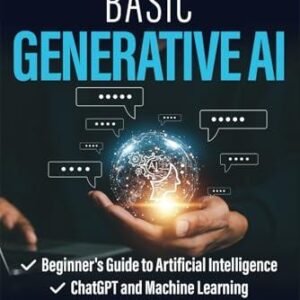In today’s fast-paced digital landscape, the ability to harness and analyze streaming data in real-time is becoming increasingly vital for businesses seeking a competitive edge. As organizations generate vast amounts of information at every moment, the challenge lies not just in collecting this data, but in extracting actionable insights from it swiftly and accurately. Enter real-time machine learning – a transformative approach that empowers businesses to respond to changing conditions instantaneously. In this article, we will delve into the world of real-time machine learning, exploring its capabilities, applications, and the innovative technologies that are unlocking unprecedented insights from streaming data. Whether you’re a data scientist, a business leader, or simply curious about the future of analytics, this exploration will illuminate how real-time machine learning is reshaping decision-making strategies and driving success across industries.
Table of Contents
- Understanding Real-Time Machine Learning and Its Importance for Streaming Data
- Key Technologies and Frameworks Driving Real-Time Machine Learning Solutions
- Best Practices for Implementing Real-Time Machine Learning in Your Organization
- Future Trends in Real-Time Machine Learning and Their Implications for Data Strategy
- Wrapping Up
Understanding Real-Time Machine Learning and Its Importance for Streaming Data
In today’s fast-paced digital landscape, the ability to analyze and act on data as it streams in is crucial for organizations looking to maintain a competitive edge. Real-time machine learning combines traditional machine learning with continuous data ingestion, allowing systems to learn from data as it becomes available. This dynamic approach enables businesses to detect patterns, identify anomalies, and make predictions without the latency typically associated with batch processing. By leveraging algorithms that can evolve with each new data point, organizations can not only improve their decision-making processes but also enhance user experience through personalized interactions.
Real-time applications span various sectors, from finance to healthcare, highlighting machine learning’s versatility. With streaming data, businesses can achieve:
- Immediate Insights: Access to live analytics facilitates swift responses to changing conditions.
- Enhanced Forecasting: Continuous model updates ensure predictions are based on the most current data.
- Reactive Strategies: The ability to adjust operational tactics on-the-fly minimizes risks and maximizes opportunities.
The integration of real-time machine learning into streaming architectures is becoming increasingly essential, and it allows organizations to adapt and thrive in an ever-evolving environment.
Key Technologies and Frameworks Driving Real-Time Machine Learning Solutions
In the rapidly evolving landscape of machine learning, several key technologies and frameworks are essential for developing effective real-time solutions. Apache Kafka, for instance, serves as a powerful tool for managing real-time data feeds, providing high throughput and low latency for streaming data. Coupled with tools like Apache Flink and Apache Spark Streaming, organizations can process large volumes of data in real-time, allowing for immediate insights. These frameworks support complex event processing, enabling real-time analytics and machine learning model inference directly from streaming data. They facilitate easy scalability, ensuring that as data loads increase, the infrastructure can adapt without sacrificing performance.
Additionally, TensorFlow Extended (TFX) and Kubeflow streamline the deployment of real-time machine learning models. TFX assists in managing the machine learning pipeline, ensuring that data validation, preprocessing, and model training are seamlessly integrated. Meanwhile, Kubeflow, which runs on Kubernetes, supports the orchestration of machine learning workflows at scale. By employing these technologies, businesses can operationalize machine learning models efficiently, with features such as automated model monitoring and model retraining, ensuring that insights remain relevant and actionable in a fast-paced environment. The integration of these frameworks fosters a robust ecosystem, empowering organizations to unlock real-time insights from their data.
Best Practices for Implementing Real-Time Machine Learning in Your Organization
Implementing real-time machine learning in your organization requires a strategic approach that aligns with your business goals. Start by establishing a clear objective for your machine learning initiatives. Determine what you want to achieve with real-time analytics—be it improved customer experience, fraud detection, or operational efficiency. Next, invest in data infrastructure capable of handling streaming data efficiently. This includes utilizing tools that facilitate data ingestion, such as Apache Kafka or AWS Kinesis, to ensure that your systems are prepared for rapid data flows. Building a robust data pipeline is essential for feeding high-quality, processed data to your models.
Furthermore, foster a collaborative culture where data scientists, engineers, and business stakeholders work together closely. Encourage regular communication to align technical capabilities with business needs, ensuring everyone understands the real-time insights being generated. Also, prioritize continuous learning and adaptation; real-time machine learning models should be regularly updated based on new data. This means implementing automated retraining mechanisms and monitoring systems that ensure model performance remains robust. don’t forget to put a strong emphasis on ethical considerations, ensuring that your models are transparent and fair in their predictions.
Future Trends in Real-Time Machine Learning and Their Implications for Data Strategy
As organizations increasingly rely on real-time machine learning to gain insights from streaming data, several trends are set to shape the future landscape of this technology. Federated Learning emerges as a significant trend, allowing models to be trained across decentralized devices while maintaining data privacy. This approach not only enhances data security but also improves the accuracy of predictions by utilizing data from multiple sources without the need to centralize it. Alongside this, the rise of AutoML will democratize access to machine learning capabilities, enabling even non-experts to deploy real-time models efficiently. By reducing the need for extensive coding and tuning, AutoML tools will empower diverse teams within organizations to extract actionable insights swiftly.
Moreover, the integration of edge computing with real-time machine learning will revolutionize data processing. By processing data closer to the source, organizations can achieve lower latency and higher efficiency. This trend is especially important for industries that require immediate decision-making, such as autonomous vehicles and smart manufacturing. In parallel, advancements in explainable AI will provide greater transparency in machine learning models, allowing stakeholders to understand the basis of predictions. This understanding is crucial for building trust and ensuring compliance with regulatory standards. As these trends unfold, organizations will need to rethink their data strategies, focusing on agility, security, and user empowerment to stay competitive in a rapidly evolving technological environment.
Wrapping Up
real-time machine learning for streaming data stands at the forefront of technological innovation, unlocking a treasure trove of insights that can propel organizations into a new era of decision-making. As we have explored, this dynamic approach not only enhances predictive capabilities but also ensures that businesses remain agile in an increasingly fast-paced digital landscape.
By leveraging real-time analytics, organizations can respond to emerging trends, optimize operations, and tailor offerings to meet the ever-evolving needs of their customers. The key lies in adopting the right tools and strategies that empower teams to harness the full potential of their data streams.
As we move forward, the importance of integrating real-time machine learning into everyday operations cannot be overstated. For businesses willing to embrace this technology, the rewards are substantial—transforming data from mere numbers into actionable insights that drive growth and innovation.
Thank you for joining us in exploring this exciting field. We encourage you to stay curious, continue experimenting with these technologies, and keep seeking new ways to innovate in your own operations. The future of data-driven decision-making is here, and it’s incredibly bright.





